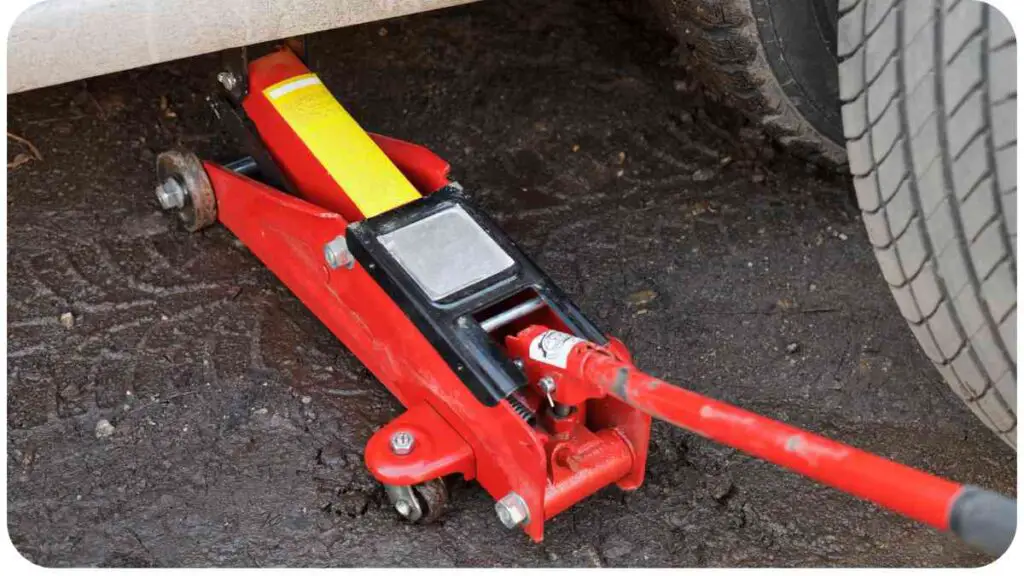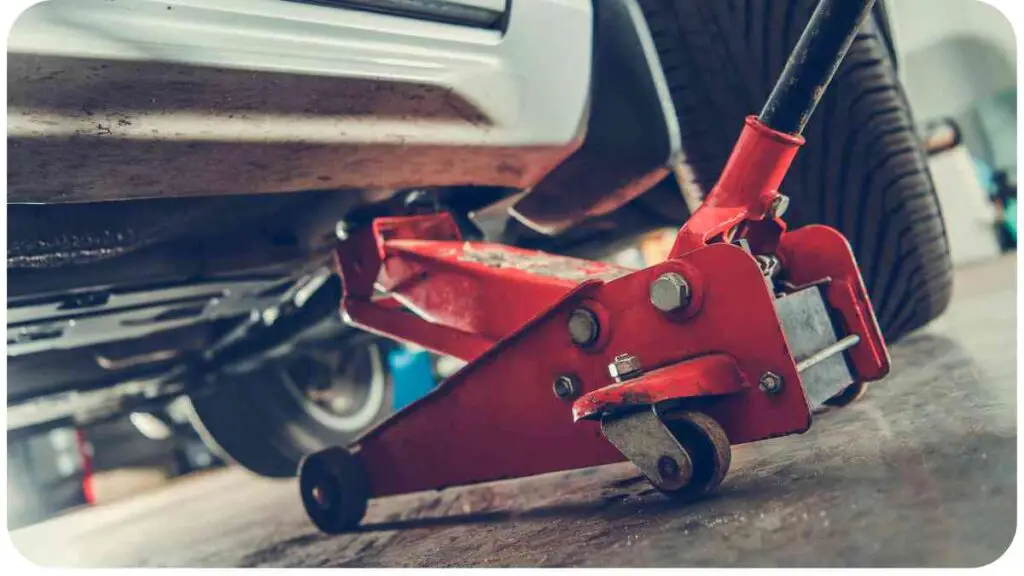When it comes to off-roading, having the right equipment is key to maximizing your vehicle’s performance and enjoyment. One of the options worth exploring is whether your 4×4 needs a lift kit. A lift kit can provide additional ground clearance, increased tire size options, improved approach and departure angles, and enhanced off-road capability.
In this article, we will delve into the world of lift kits, exploring different options available for your vehicle. We’ll discuss the various types of lift kits, their pros and cons, and offer expert recommendations along the way. To make it easier for you to understand, we have included tables throughout the article to provide relevant information under appropriate headings.
| Takeaways |
| Choosing the right 4×4 lift kit involves considering factors such as lift height, suspension type, and compatibility. |
| A lift kit provides increased ground clearance, allowing for easier navigation through rough terrains. |
| Lift kits are beneficial for off-road enthusiasts looking to enhance their vehicle’s performance and capabilities. |
| Lift kits can affect the warranty of your vehicle, so it’s important to check with the manufacturer and dealership for any potential implications. |
| Installing a lift kit may require additional modifications to ensure proper functionality and performance of the vehicle. |
| Lift kits are not only for off-road use; they can also enhance the aesthetic appearance of your vehicle. |
2. Understanding Lift Kits
2.1 What is a Lift Kit?
A lift kit is an aftermarket modification designed to raise the ride height of a vehicle. It typically consists of various components such as taller springs, lifted suspension components, and sometimes even body isolators. The primary purpose of a lift kit is to increase ground clearance, allowing your vehicle to navigate rough terrains more effectively.
When customizing your off-road truck, you have countless options to enhance its appearance and performance. Whether you’re aiming for style or functionality, these tips and tricks can help you achieve a unique look.
2.2 Why Consider a Lift Kit for Off-Roading?

If you are an avid off-roader or frequently encounter challenging terrains, a lift kit can significantly improve your vehicle’s capabilities. It ensures that your 4×4 has enough clearance to clear obstacles without getting caught, minimizes the risk of undercarriage damage, and provides better off-road stability. Additionally, a lift kit allows you to fit larger tires, which can improve traction and grip on uneven surfaces.
2.3 Different Types of Lift Kits
There are three main types of lift kits commonly used for off-roading: suspension lift kits, body lift kits, and coil spring spacers. Each option offers its unique advantages and considerations, depending on your specific needs and preferences.
2.4 Pros and Cons of Lift Kits
Before diving deeper into the types of lift kits available, it’s essential to understand the pros and cons associated with these modifications. Here’s an overview:
Upgrading your off-road vehicle’s suspension is essential for maximizing its performance. Learn about the components and adjustments that can enhance your ride quality and off-road capabilities.
Pros:
- Increased ground clearance
- Improved off-road capability
- Ability to fit larger tires
- Enhanced approach and departure angles
- Better visibility on the trail
Cons:
- Higher center of gravity
- Altered drivetrain geometry
- Potential changes to ride quality
- Increased wind resistance and decreased fuel efficiency
3. Suspension Lift Kits
Suspension lift kits are the most popular choice for off-road enthusiasts due to their ability to significantly increase ground clearance and enhance overall off-road performance. Let’s explore the components, popular brands, installation process, expected performance enhancements, and some expert tips and recommendations.
3.1 Components of Suspension Lift Kits

A suspension lift kit typically includes components such as lifted springs, shock absorbers, control arms, track bars, sway bar links, and other necessary hardware. These components work together to elevate the vehicle’s suspension, allowing for greater clearance between the ground and the undercarriage.
3.2 Popular Brands and Models
Below, you’ll find a comparison table showcasing some popular suspension lift kit brands and their respective models:
3.3 Installation Process and Difficulty Level
Installing a suspension lift kit can be a complex process, especially for those without prior experience. It often involves disassembling parts of the suspension system, replacing components, and ensuring proper alignment. The difficulty level can vary depending on the specific vehicle and the lift kit’s complexity.
For beginners or those unfamiliar with working on vehicles, it is recommended to seek professional assistance for the installation to ensure safety and optimal performance.
Choosing the right off-road tire is crucial for a safe and enjoyable off-roading experience. This comprehensive guide will help you select the best tires for your 4×4.
3.4 Expected Performance Enhancements
Once a suspension lift kit is installed, you can expect various performance enhancements for your off-road adventures. These include:
- Increased ground clearance: The higher ride height allows your vehicle to clear obstacles like rocks, logs, and uneven terrain more easily.
- Improved articulation: With a suspension lift, your 4×4 gains better axle articulation, enabling the wheels to maintain contact with the ground on uneven surfaces.
- Enhanced off-road capability: The increased clearance and improved suspension components provide better off-road traction, stability, and control.
- Ability to fit larger tires: A suspension lift kit creates additional space in the wheel wells, enabling the use of larger tires for improved traction and better off-road performance.
- Better approach and departure angles: The raised suspension helps improve the angles at which your vehicle can approach and depart obstacles without scraping the bumper or undercarriage.
3.5 Expert Tips and Recommendations
As an experienced off-roader, I would like to offer some expert tips and recommendations:
- Research and consult: Before making a decision, thoroughly research various suspension lift kits available for your specific vehicle model. Seek advice from fellow off-roaders, online forums, and trusted off-road shops.
- Quality matters: Invest in a reputable and high-quality suspension lift kit. Brands known for their expertise, durability, and performance can provide a more reliable off-road experience.
- Match the lift height to your needs: Consider the type of off-roading you frequently engage in and the terrain you typically encounter. Choose a lift height that suits your requirements without compromising safety, stability, and ride quality.
- Suspension upgrades: Often, it is beneficial to upgrade other suspension components alongside the lift kit installation. This might include upgraded shocks, sway bars, and control arms to optimize the overall performance of the suspension system.
- Regular maintenance: Once the lift kit is installed, maintenance becomes even more crucial. Regularly inspect the suspension components, check for any signs of wear or damage, and address any issues promptly to ensure optimal function and safety.
Remember, every vehicle is unique, so it’s essential to assess your specific needs and consult with experts to recommend the right suspension lift kit for your off-roading adventures.
4. Body Lift Kits
In addition to suspension lift kits, another option for enhancing the ground clearance of your 4×4 is a body lift kit. Let’s delve into the components, popular brands, installation process, expected performance enhancements, and expert tips related to body lift kits.
Maintaining the correct tire pressure is essential for off-road adventures. This guide will show you how to correctly inflate your off-road vehicle’s tires to ensure optimal performance and safety.
4.1 Components of Body Lift Kits
Body lift kits primarily consist of spacer blocks or pucks that are placed between the vehicle’s body and frame. These spacers lift the body higher from the frame, creating additional space between the undercarriage and the ground. Extended bolts, brackets, and other necessary hardware are also included to maintain proper alignment and ensure a secure installation.
4.2 Popular Brands and Models
Here’s a table showcasing some notable body lift kit brands and their respective models:
4.3 Installation Process and Difficulty Level
Installing a body lift kit is generally considered less complex compared to a suspension lift kit. The process involves lifting the vehicle’s body by removing the bolts that hold it to the frame, placing the spacer blocks or pucks in the appropriate locations, and then reinstalling the bolts.
However, it is still recommended to have intermediate mechanical skills or seek professional assistance for a smooth and safe installation.
4.4 Expected Performance Enhancements
Body lift kits offer some key advantages for off-roading enthusiasts, including:
- Increased ground clearance: By lifting the body higher from the frame, a body lift kit provides additional clearance, making it easier to navigate through rough terrains.
- Fit larger tires: The extra space created by the body lift allows for the installation of larger tires, which can enhance off-road traction and performance.
- Cost-effective solution: Body lift kits are generally more affordable compared to suspension lift kits, making them an attractive option for those on a budget.
Differentials play a crucial role in off-roading. Understand their function and importance to master off-road terrain and make informed decisions when customizing your 4×4 vehicle.
4.5 Expert Tips and Recommendations
Here are some expert tips that can help you make the most of your body lift kit installation:
- Check local regulations: Before proceeding with a body lift, familiarize yourself with local regulations and restrictions regarding lift heights. Some areas have specific limitations on how much a vehicle’s body can be lifted.
- Address other modifications: Keep in mind that installing a body lift kit may require adjustments to other vehicle components such as the steering column, shift linkage, and radiator fan shroud. Ensure all necessary modifications are made to maintain proper functionality and avoid any potential issues.
- Consider the gap: With a body lift, there will be a gap between the frame and body. Some off-roaders choose to use gap guards or filler panels to cover this space for aesthetic purposes.
- Assess impacts on center of gravity: It’s important to understand that a body lift raises the entire body of the vehicle, potentially affecting the center of gravity. Modify your driving style accordingly, and always prioritize safety.
By following these tips and ensuring a proper installation, you can enjoy the benefits of a body lift kit without compromising on safety or vehicle performance.
Now, let’s move on to exploring another type of lift kit: coil spring spacers.
5. Coil Spring Spacers
Coil spring spacers are another option to consider when looking to lift your 4×4. These spacers are placed between the vehicle’s coil springs and the suspension components to provide additional lift. Let’s dive into the components, popular brands, installation process, expected performance enhancements, and expert tips related to coil spring spacers.
5.1 Components of Coil Spring Spacers
Coil spring spacers are usually made of high-density polyurethane or metal and come in various thicknesses. They are designed to fit between the coil springs and the spring perches or spring seats, depending on the specific suspension configuration of your vehicle. The spacers provide an increased height between the axle and the frame.
5.2 Popular Brands and Models
Here’s a comparison table showcasing some popular coil spring spacer brands and their respective models:
5.3 Installation Process and Difficulty Level
Installing coil spring spacers is generally considered less complex compared to suspension lift kits and body lift kits. The process involves removing the coil springs, placing the spacers on top or bottom of the springs (depending on the desired effect), and reassembling the suspension components.
However, it is still recommended to have intermediate mechanical skills or seek professional assistance for a smooth and safe installation.
5.4 Expected Performance Enhancements
Coil spring spacers offer the following performance enhancements:
- Increased ground clearance: By effectively raising the vehicle’s height, coil spring spacers provide additional clearance for off-road obstacles, allowing you to traverse rough terrains more easily.
- Cost-effective solution: Coil spring spacers are generally more affordable compared to suspension lift kits and body lift kits, making them a budget-friendly option for those looking to enhance their off-road capabilities.
- Retained stock ride quality: Since coil spring spacers are added to the existing suspension components, they typically do not significantly affect the original ride quality of the vehicle.
5.5 Expert Tips and Recommendations
Consider the following expert tips to make the most of your coil spring spacer installation:
- Choose the right thickness: Coil spring spacers come in various thicknesses, allowing you to adjust the lift height according to your needs. Take into account factors such as tire size, desired ground clearance, and overall vehicle balance to select the appropriate thickness.
- Suspension compatibility: Ensure that the coil spring spacers you choose are compatible with your specific suspension setup. Different vehicles may have different coil spring configurations, so it’s important to select spacers designed for your particular make and model.
- Complement with other modifications: Coil spring spacers can be combined with other suspension modifications, such as upgraded shocks or aftermarket control arms, to further enhance your 4×4’s off-road performance. Consider these additional modifications to optimize the overall suspension system.
- Regular inspection and maintenance: After installing coil spring spacers, regularly inspect the suspension components, including the spacers themselves, for wear, damage, or deterioration. Address any issues promptly to maintain optimal performance and safety.
By following these expert tips and recommendations, you can achieve the desired lift and improved off-road performance using coil spring spacers.
6. Summary and Conclusion
In conclusion, lift kits are a popular choice for off-road enthusiasts looking to enhance their 4×4’s performance and capabilities. Suspension lift kits provide significant ground clearance and improve off-road traction, while body lift kits and coil spring spacers offer more affordable options with moderate lift heights. Each type of lift kit has its own set of advantages and considerations.
Before making a decision, carefully assess your off-roading needs and consider factors such as compatibility, installation difficulty, expected performance enhancements, and budget. It is also recommended to consult with experts or seek professional assistance during the installation process to ensure optimal safety and performance.
Further Reading
Here are some additional resources for further reading on 4×4 lift kits:
- A Guide to Choosing the Right 4×4 Lift Kit: This informative blog post provides a comprehensive guide to help you choose the right lift kit for your 4×4. It covers various considerations such as lift height, suspension types, and brand recommendations.
- Why Do You Need a Lift Kit?: Fulcrum Suspensions explains the reasons why you might need a lift kit for your vehicle. The article highlights the benefits of improved ground clearance, better off-road capabilities, and the ability to fit larger tires.
- Lift or Level Your Off-Road Vehicle?: This post by FlexBilt Customs explores the differences between lifting and leveling a vehicle. It discusses the benefits of each approach, the impact on performance and aesthetics, and helps you determine the right choice for your specific needs.
FAQs
Here are some frequently asked questions about 4×4 lift kits:
What is the purpose of a lift kit?
A lift kit increases the ride height of a vehicle, providing additional ground clearance and allowing for the installation of larger tires. This enhances off-road capabilities and helps navigate rough terrains more easily.
Will installing a lift kit affect my vehicle’s warranty?
Modifying your vehicle with a lift kit might impact the warranty, as it alters the original design and can potentially affect other components. It is advisable to check your vehicle manufacturer’s warranty guidelines or consult with the dealership to understand the specific implications.
How long does it take to install a lift kit?
The installation time for a lift kit can vary depending on the type of kit, the complexity of the vehicle’s suspension, and the experience level of the installer. It can range from a few hours for a basic body lift to a full day or more for a complex suspension lift.
Do I need to make any other modifications after installing a lift kit?
In some cases, additional modifications may be required to maintain proper functionality and performance after installing a lift kit. This could include upgrades to components such as shocks, control arms, and steering stabilizers to optimize the suspension system.
Are lift kits only for off-road use?
While lift kits are commonly associated with off-roading, they can also be used for aesthetic purposes, giving your vehicle a more aggressive and rugged appearance. However, it’s important to remember that lift kits primarily enhance off-road performance and should be chosen accordingly.
Please note that the information provided here is for general informational purposes, and it’s always recommended to consult with professionals and refer to specific manufacturer guidelines for accurate and up-to-date information.

Hi there! I’m Hellen James, and I’m the author of Unified Off-roads. I’ve been driving off-road for more than ten years, and I’ve had a lot of fun in that time—and a few not-so-great experiences too. But I’ve always wanted to help other people get started off-roading, so I decided to start this blog to share my knowledge with others.


